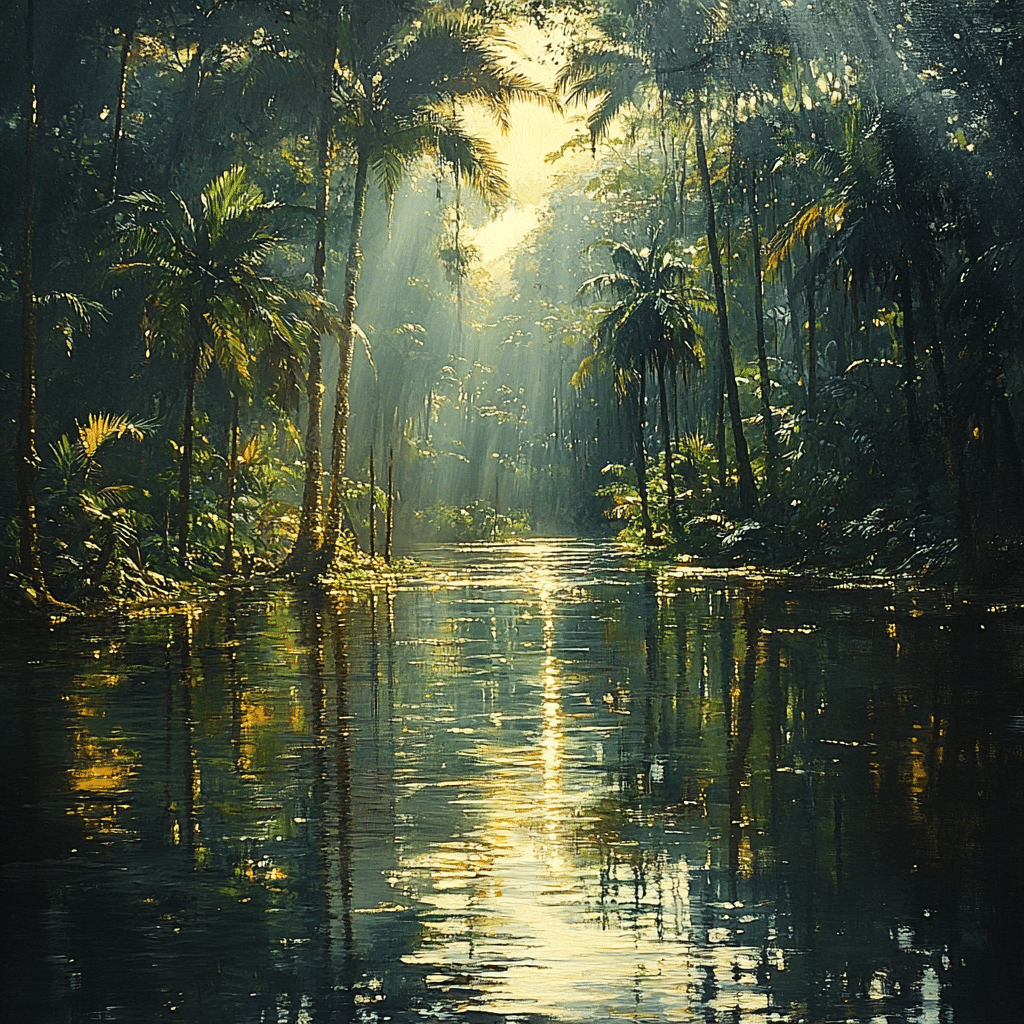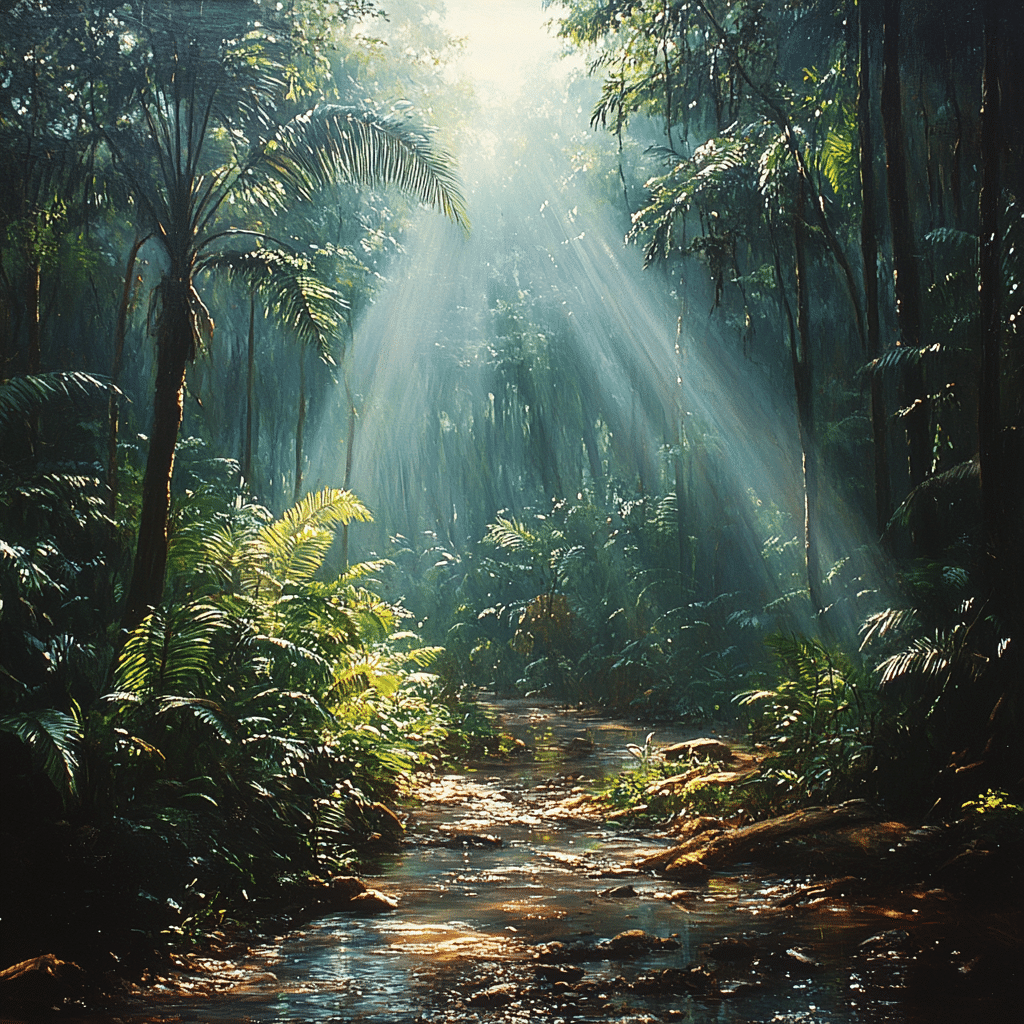The Amazon: The Rainforest’s Ecological Treasure
The Amazon rainforest, often dubbed “the lungs of the Earth,” stretches across a staggering 5.5 million square kilometers. This lush expanse isn’t just a pretty sight; it plays a crucial role in our planet’s climate system by absorbing carbon dioxide and producing oxygen. With around 390 billion individual trees representing about 16,000 species, the Amazon is a veritable ecological treasure. Among the incredible wildlife thriving in this biodiversity hotspot, approximately 10% of all known species on the planet call the Amazon home, from mighty jaguars to languid sloths and a dazzling array of colorful birds.
The health of the Amazon rainforest is intrinsically linked to the survival of our planet. Its trees are a natural carbon sink, absorbing roughly 1.5 billion tons of carbon dioxide annually. This means the Amazon is not just a local treasure; it is a critical ally in the fight against climate change. To put it another way, protecting the Amazon is synonymous with protecting our global climate.
Understanding this ecological treasure allows us to appreciate the importance of preserving the Amazon rainforest’s incredible diversity. As we delve deeper into the wonders of the Amazon, we find layers of significance that touch on climate, medicinal resources, and the lives of indigenous populations who have thrived in harmony with this ecosystem for thousands of years.

The Amazon Rainforest: 7 Amazing Facts You Didn’t Know
The Interconnectedness of the Amazon River and the Rainforest
The Amazon River acts as a lifeblood for the rainforest, influencing everything from the biodiversity of plant and animal life to local climate. Nutrient-rich sediments deposited along the riverbanks foster the growth of unique plant species, forming rich ecosystems. For instance, the interdependency between the river and rainforest is vital for species such as the Amazonian manatee, which requires both river environments and forest areas for feeding and breeding.
Moreover, the river serves as a crucial transportation route for communities living nearby. For river-based indigenous peoples, the waterways are imperative for travel, trade, and maintaining connections with others. The intertwined relationship of the Amazon river and the rainforest emphasizes the need for holistic conservation strategies that consider the interconnectedness of these ecosystems.
As our understanding deepens, it’s clear that tackling protective measures for the Amazon cannot focus solely on the trees. We must integrate river systems, various wildlife, and local communities into our conservation efforts. This is paramount for safeguarding both the Amazon rainforest and its rivers.

The Future of the Amazon: Challenges and Opportunities
Looking ahead to 2024, the fate of the Amazon rainforest hinges on global unity in addressing its environmental challenges. Increasing awareness of climate change and biodiversity loss has led to partnerships among governments, NGOs, and private sectors. For instance, the Amazon Fund aims to gather financial support for projects that help reduce deforestation, showcasing how economic mechanisms can fuel conservation.
Emerging technologies such as satellite imagery and drone surveys improve our ability to monitor the rainforest effectively. Countries and organizations working together mean policy implementation will be critical. Regulations around land use should prioritize conservation and that local populations—and specifically indigenous rights—are strictly upheld to ensure the survival of this vital eco-region.
Reflecting on the Value of the Amazon Rainforest
In essence, the Amazon rainforest transcends being mere trees and wildlife; it forms a complex network of life that sustains not just its inhabitants but also the planet at large. With its unmatched biodiversity, vital function in climate regulation, and medicinal resources, the importance of the Amazon rainforest in our global ecosystem cannot be overstated. As we step into 2024, the responsibility to protect this ecological treasure is paramount. The survival of the Amazon mirrors a broader existential concern, prompting innovative solutions and collective actions. In safeguarding the Amazon, we’re laying the groundwork for a sustainable future for generations to come.
Whether you’re planning a vacation in nearby areas or interested in learning how diverse ecosystems work, the Amazon rainforest offers invaluable lessons and breathtaking experiences. Protecting this treasure is not just the job of policymakers or organizations; it starts with all of us recognizing and valuing what this irreplaceable biodiversity hotspot offers.
Amazon the Rainforest: An Epicenter of Life
Fascinating Flora and Fauna
Did you know the Amazon rainforest is home to about 390 billion individual trees, which represent approximately 16,000 different species? Mind-boggling, right? This extraordinary biodiversity is just a small piece of what makes the Amazon the rainforest so essential to our planet. It stores vast amounts of carbon, helping to combat climate change. As industries scrape the tree line, deforestation threatens not just local wildlife, but also the climate stability of distant places, including cities as far away as Puerto Rico, where you can find stunning places to stay like the San Juan puerto rico Hotels.(
Traditional Communities and Their Knowledge
Some 400 indigenous groups live in the Amazon the rainforest, many of whom depend entirely on its resources for their survival. Their rich cultural knowledge has been built over centuries, particularly in sustainable practices. Sadly, globalization pressures put these communities at risk. Take, for instance, recent news as political figures like Gaetz Withdraws( from supporting environmental initiatives, which may further jeopardize the Amazon’s intricate ecosystems.
The Rainforest’s Role in Global Weather Patterns
The Amazon the rainforest doesn’t just produce oxygen; it’s vital for global weather systems. It acts like a tremendous sponge, absorbing moisture and releasing it into the atmosphere. This process influences rain patterns well beyond its borders. Interestingly, the far reaches of North America, like the Sierra Nevada, can feel the impacts. The weather systems emanating from the Amazon directly connect to phenomena such as the Sierra Nevada california snow storm,( making it clear that what happens deep in the forest ripples across the globe.
Nature’s Pharmacy
The Amazon the rainforest also holds a treasure trove of medicinal plants, with roughly 25% of modern medicines derived from its flora. From treating chronic illnesses to offering pain relief, these plants are invaluable. One could say that the knowledge surrounding them is as compelling as Hollywood stories, like The Conjuring 3,( weaving mystery and intrigue into the fabric of nature. However, as habitats disappear, so does this precious knowledge—reminding us that conservation efforts need to kick into high gear.
With all this in mind, the importance and diversity of the Amazon the rainforest cannot be overstated. It’s a natural wonder that’s continually surprising us and, quite frankly, keeping our planet alive. So, let’s be mindful of our choices. Perhaps, thinking about something as casual as whether or not Starbucks Is open on Christmas( shouldn’t overshadow the importance of protecting places like the Amazon.




